

The last decade has changed the face of mobile phones. Major milestones have seen the introduction of brand new, game changing technologies as well as the death of big brands and operating systems.
Back in 2010, we were getting excited about the HTC Desire and iPhone 4. Now, we’re talking about foldable devices, the introduction of 5G and some of the most high-tech pieces of kit you could imagine in your pocket.
While the noughties may have seen the introduction of the smartphone, manufacturers have taken devices to new heights in the last 10 years. That’s why sitting down and deciding on the best phone of the decade has been difficult task.
We’ve been reviewing smartphones for the entire decade and beyond, so we put our collective heads together to come up with a top five list of the most impressive, influential and trendsetting devices of the last 10 years.
Below you can see how we decided on the list – Editor in Chief of TechRadar (and ex-Phones Editor) Gareth Beavis and Phones Editor James Peckham take on this task and try to come up with a fair list of the best devices.
There’s one clear winner though, which if you read on below you’ll find out all about:
5. OnePlus 3
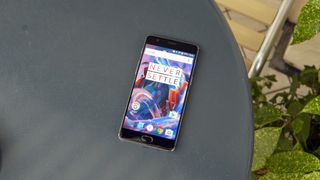
The Chinese manufacturer rocked the mobile market with its OnePlus One ‘flagship killer’ in 2014, but with limited availability and a tepid follow-up in the form of the OnePlus 2, it wasn’t until 2016 and the OnePlus 3 when the firm really made its mark on the industry.
The OnePlus 3 was the company’s first all-metal handset, instantly making it look and feel like a true top-tier device. It boasted a flagship chipset, plenty of RAM and a large 5.5-inch display. The real kicker, however, was the price.
The OnePlus 3 cost around half the price of the iPhone 7, Samsung Galaxy S7 Edge, HTC 10 and Sony Xperia X – and showed the world that you didn’t need to pay through the nose to bag yourself a smartphone which had plenty of grunt and a premium design.
Imitation is the sincerest form of flattery, and that’s certainly the case with the OnePlus 3. It set the standard for “affordable flagships” and since its introduction with seen the likes of Honor, Xiaomi, Oppo, Alcatel, Realme and more follow a similar formula – with varying degrees of success.
In recent years, even the established names have looked to take a leaf out of the OnePlus playbook, with handsets like the iPhone XR and Samsung Galaxy S10e making an appearance.
The OnePlus 3 allowed us to dream. It allowed us to believe. It allowed us to own a premium handset without plunging us into crippling debt. And for that, we salute you.
4. iPhone 4
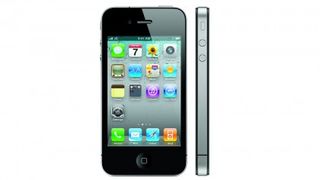
The iPhone was something of a joke among the ‘true’ tech fans of the world until this model came along – the plastic backs of the 3G and 3Gs, with the limited screen quality and poorer cameras did it no favors.
However, one feted trip to the bar and one lost iPhone later, the world glimpsed the new iPhone 4 for the first time. Whether this was intentional or not, we’ll never know, but the hype it generated was off the charts.
Why? Well, the Retina display was higher-res than anything Apple had made until that point – and of higher quality and richness too.
The camera was boosted, taking faster and sharper pictures that really shone on the new screen tech. But that’s not the reason it’s on this list – it’s the design. The industrial, metal rim and glass back were a real statement that Apple was serious about the smartphone game, and the improved power and upgraded design were shining symbols of that.
Was it the best phone on the market? Hell no, there were tonnes of more capable devices. But Apple’s burgeoning App Store, slick design and easy interface on the iPhone 4 was the moment the iPhone became more mainstream in critics’ eyes – and that led to the domination you see today.
3. Moto G
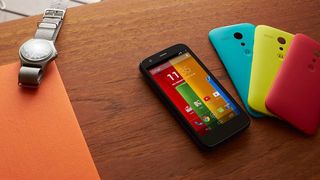
The Moto G is by far the least impressive handset on this list, but it changed what phones were capable of. It didn’t have an impact on the top-end like the HTC One M8 or the iPhone 5S in 2013, but instead it changed the bottom of the market.
Motorola made a conscious effort to supply impressive devices at the cheaper end of the market. It changed what we could expect from the low-end handsets that were quite often terrible and difficult to recommend to anyone looking to save money.
The Moto G came along in 2013, and it just worked. Sure, it didn’t have an impressive rear camera or phenomenal power inside, but it did enough so it just actually worked well.
Finally, there was a phone on the market that cost less that we could wholeheartedly recommend to anyone that wanted a more affordable device.
From there, the company took the Moto G series to new heights introducing new camera technology as well as new variants that have their own specific impressive features.
Take the Moto G7 Power with its phenomenal two day battery life. Without the Moto G, that phone wouldn’t have been possible.
The Moto G won’t go down as the best phone of the 2010’s, but it helped change the face of one of the most interesting areas of the whole phone industry.
2. Samsung Galaxy S7 Edge
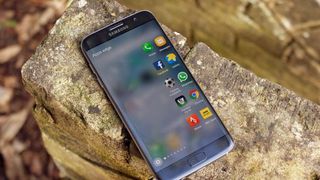
It’s easy to forget how exciting the Samsung Galaxy S7 Edge was. We’d seen the bent screen technology debut the year before in the Galaxy Note Edge, but this was the second iteration and it was vastly improved for the flagship S7 phone.
The Samsung Galaxy S7 Edge was a five star handset on TechRadar. In fact, it was the last five star handset review in the phone space on the site, and we haven’t seen anything worthy of that accolade on since it debuted in 2016.
It wasn’t just the bendy screen technology that resonated with us though. The screen was bigger because of that curved tech, and it was just a genuinely well built phone with a beautiful glass design.
There was a bigger battery that allowed for the phone to last for a solid day, plus the camera was one of the best that we’d seen on a phone at the time and by far the greatest Samsung had introduced.
At the time, we said, “we could always want more from our handsets… but if you’re looking for a well-designed, powerful phone that actually packs some useful day-to-day features, the Galaxy S7 Edge is the one to go for.”
Written by James Peckham, Phones Editor at TechRadar 2019-now
1. HTC One M8
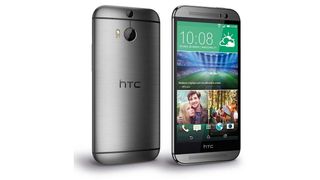
There are some moments in a tech journalist’s career when you know you’re seeing something that absolutely represents the very best of the best – holding the HTC One M8 for the first time was one of them.
HTC, in the early part of this decade, was the big challenger to Apple’s iPhone dominance, with the Desire being the first true rival from the Android stable. And while Samsung’s resources and budget meant it started to pick up momentum, HTC’s rebooted ‘One’ line of phones was still the critics’ choice for so many reasons.
The ‘original’ One (let’s forget about the confusing One X, S and V that preceded it) was launched in 2013, and it showed that HTC was a brand still to be reckoned with – the metal chassis, the brilliant low-light camera and front-firing BoomSound speakers were revolutionary, and the software made the very most of Android.
Fast forward a year, and the ‘tricky second album syndrome’ was all reviewers could talk about. Would HTC be able to build on an almost perfect phone? What headroom was there left?
The One M8 (ridiculous name aside) was proof that perfection could be improved upon. The upgraded screen, speakers and addition of a second lens were big jumps forward (how many phones today have a single lens?) but it was the refined, polished and just more impressive feel of the phone in the hand that made it one of our top phones of all time.
Sure, it might not have dramatically exceeded the specs of the previous model, but that was a revolutionary device – the One M8 showed that it’s possible to bring amazing refinement and improvements in key areas, and that’s why it’s still a phone we’d love to see rebooted and brought into the 2020s.
[“source=techradar”]

